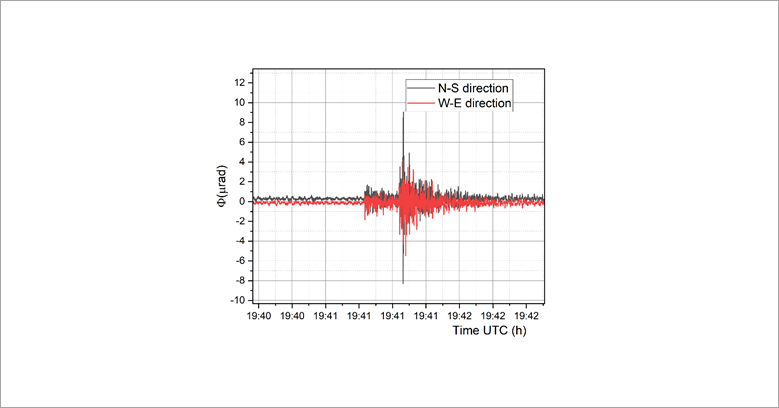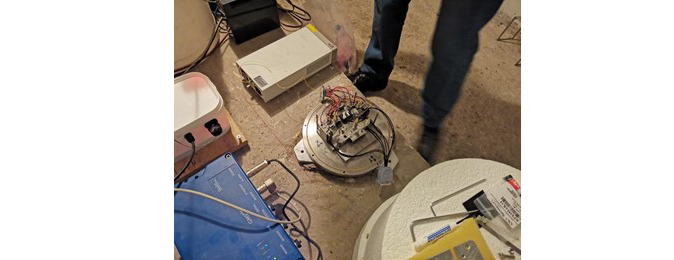JINR compact precision laser inclinometer installed in Kamchatka
Media, 21 December 2022
In early December, JINR specialists installed a compact precision laser inclinometer in Petropavlovsk-Kamchatsky. This will make it possible to register seismic activity and predict volcanic activity in the region. Scientists have already started monitoring seismic activity in the city and are receiving earthquake signals.
“We are already conducting daily monitoring of seismic activity in Petropavlovsk-Kamchatsky,” Head of the Sector of the Laboratory of Nuclear Problems JINR Mikhail Lyablin said. “The device detects earthquakes almost every day in the fault zone, as well as all microseismic vibrations of the “microseismic peak” type, the phenomena related to resonance vibration of water mass in the ocean.”
 Earthquake detected on 8 December 2022 with “microseismic peak” vibrations in the background
Earthquake detected on 8 December 2022 with “microseismic peak” vibrations in the background
The installation of a compact precision laser inclinometer (CPLI) by JINR scientists in Kamchatka was the result of the Agreement on Cooperation between JINR, the Vitus Bering Kamchatka State University (KAMSU), and the Federal Research Center “Unified Geophysical Service of the Russian Academy of Sciences” (Kamchatka Branch of UGS) in Kamchatka. In October−November 2022, the staff members of KamSU and UGS Daniyal Israpilov and Vitaly Glukhov took a training course at JINR. Together with specialists of the DLNP Laboratory of Metrology, they assembled one CPLI. Then a group of DLNP JINR scientists, including Mikhail Lyablin, Alexey Krasnoperov, and Alexey Kuzkin, transported it to Petropavlovsk-Kamchatsky. The group adjusted and calibrated the inclinometer in a seismic monitoring chamber on the UGS site at a depth of 5 m and installed the necessary software.
In the photo: installing CPLI on the concrete base of the UGS seismic chamber
Scientists plan to monitor seismic activity using the CPLI and compare the data with those of other standard seismic sensors. The CPLI is located at a distance of about 25 km away from the group of volcanos, Koryaksky, Avachinsky, and Kozelsky. Specialists are studying the signals associated with them. In addition, the project includes the manufacturing of the CPLI adapted to the use in the regions and test sites near the Kamchatka volcanos.
Preparing for CPLI adjustment
In the future, DLNP specialists also plan to organize a remote access server at the Institute, which will collect data from all the inclinometers installed by the Institute, including PLIs in Kamchatka, Armenia, CERN, and at the NICA Complex. This will allow visualising the received signals online and perform their operational processing.
In addition to working with the inclinometer, during a business trip to Kamchatka, JINR scientists gave lectures to schoolchildren, teachers, and students at the JINR Information Centre at KamSU. Mikhail Lyablin spoke about two inclinometers installed at the NICA Complex, and Alexey Krasnoporev commented on the software and hardware of the devices, as well as how their work is organized at CERN and in Armenia at the Garni Geophysical Observatory.

